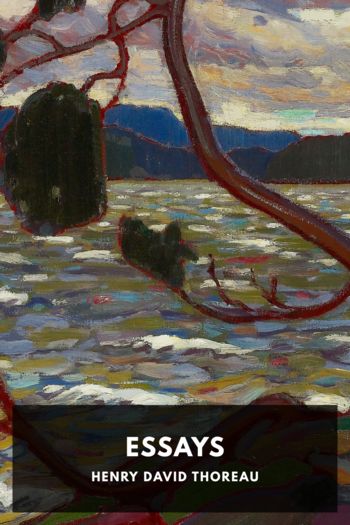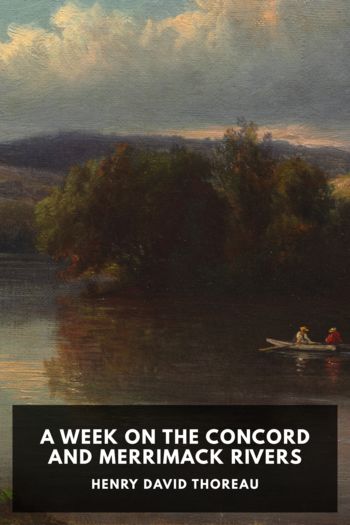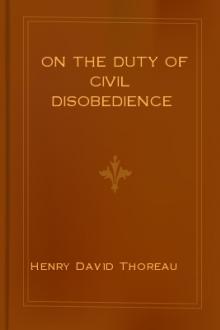Essays by Henry David Thoreau (feel good books .txt) 📕

Description
Though perhaps most famous for Walden, Henry David Thoreau was also a prolific essayist. Many of his essays touch on subjects similar to his famous book: long walks through nature, things found in moonlight that are invisible and unheard during the day, his preference for wild apples over domestic ones. In many ways he prefigured environmentalism, expressing his love for untouched nature and lamenting what the encroachment of man and cities were doing to it.
He also had strong opinions on many other subjects. One of his most famous essays, “On the Duty of Civil Disobedience,” was written as a result of his going to jail for refusing to pay several years’ worth of poll taxes. One of the primary reasons for his refusal was his holding the government in contempt for its support of slavery, and several of his other essays express support and admiration for John Brown, who thought to start a slave revolt when he attacked Harper’s Ferry in 1859.
Whether discussing trees in a forest, slavery, or the works of Thomas Carlyle, Thoreau’s essays are deeply personal and full of keen observations, often in poetic language. They give a sense of the man expressing them as being much more than the views being expressed.
Read free book «Essays by Henry David Thoreau (feel good books .txt) 📕» - read online or download for free at americanlibrarybooks.com
- Author: Henry David Thoreau
Read book online «Essays by Henry David Thoreau (feel good books .txt) 📕». Author - Henry David Thoreau
So we saunter toward the Holy Land, till one day the sun shall shine more brightly than ever he has done, shall perchance shine into our minds and hearts, and light up our whole lives with a great awakening light, as warm and serene and golden as on a bank-side in autumn.
Autumnal TintsFirst published in The Atlantic Monthly, Vol. 10, No. 60, October, 1862.
IntroductionEuropeans coming to America are surprised by the brilliancy of our autumnal foliage. There is no account of such a phenomenon in English poetry, because the trees acquire but few bright colors there. The most that Thomson says on this subject in his “Autumn” is contained in the lines—
“But see the fading many-colored woods,
Shade deepening over shade, the country round
Imbrown; a crowded umbrage, dusk and dun,
Of every hue, from wan declining green
To sooty dark;”
and in the line in which he speaks of
“Autumn beaming o’er the yellow woods.”
The autumnal change of our woods has not made a deep impression on our own literature yet. October has hardly tinged our poetry.
A great many, who have spent their lives in cities, and have never chanced to come into the country at this season, have never seen this, the flower, or rather the ripe fruit, of the year. I remember riding with one such citizen, who, though a fortnight too late for the most brilliant tints, was taken by surprise, and would not believe that there had been any brighter. He had never heard of this phenomenon before. Not only many in our towns have never witnessed it, but it is scarcely remembered by the majority from year to year.
Most appear to confound changed leaves with withered ones, as if they were to confound ripe apples with rotten ones. I think that the change to some higher color in a leaf is an evidence that it has arrived at a late and perfect maturity, answering to the maturity of fruits. It is generally the lowest and oldest leaves which change first. But as the perfect winged and usually bright-colored insect is short-lived, so the leaves ripen but to fall.
Generally, every fruit, on ripening, and just before it falls, when it commences a more independent and individual existence, requiring less nourishment from any source, and that not so much from the earth through its stem as from the sun and air, acquires a bright tint. So do leaves. The physiologist says it is “due to an increased absorption of oxygen.” That is the scientific account of the matter—only a reassertion of the fact. But I am more interested in the rosy cheek than I am to know what particular diet the maiden fed on. The very forest and herbage, the pellicle of the earth, must acquire a bright color, an evidence of its ripeness—as if the globe itself were a fruit on its stem, with ever a cheek toward the sun.
Flowers are but colored leaves, fruits but ripe ones. The edible part of most fruits is, as the physiologist says, “the parenchyma or fleshy tissue of the leaf,” of which they are formed.
Our appetites have commonly confined our views of ripeness and its phenomena, color, mellowness, and perfectness, to the fruits which we eat, and we are wont to forget that an immense harvest which we do not eat, hardly use at all, is annually ripened by nature. At our annual Cattle Shows and Horticultural Exhibitions, we make, as we think, a great show of fair fruits, destined, however, to a rather ignoble end, fruits not valued for their beauty chiefly. But round about and within our towns there is annually another show of fruits, on an infinitely grander scale, fruits which address our taste for beauty alone.
October is the month for painted leaves. Their rich glow now flashes round the world. As fruits and leaves and the day itself acquire a bright tint just before they fall, so the year near its setting. October is its sunset sky; November the later twilight.
I formerly thought that it would be worth the while to get a specimen leaf from each changing tree, shrub, and herbaceous plant, when it had acquired its brightest characteristic color, in its transition from the green to the brown state, outline it, and copy its color exactly, with paint in a book, which should be entitled, October, or Autumnal Tints;—beginning with the earliest reddening—woodbine and the lake of radical leaves, and coming down through the maples, hickories, and sumachs, and many beautifully freckled leaves less generally known, to the latest oaks and aspens. What a memento such a book would be! You would need only to turn over its leaves to take a ramble through the autumn woods whenever you pleased. Or if I could preserve the leaves themselves, unfaded, it would be better still. I have made but little progress toward such a book, but I have endeavored, instead, to describe all these bright tints in the order in which they present themselves. The following are some extracts from my notes.
The Purple GrassesBy the twentieth of August, everywhere in woods and swamps, we are reminded of the fall, both by the richly spotted sarsaparilla-leaves and brakes, and the withering and blackened skunk-cabbage and Hellebore, and, by the riverside, the already blackening Pontederia.
The purple grass (Eragrostis pectinacea) is now in the height of its beauty. I remember still when I first noticed this grass particularly. Standing on a hillside near our river, I saw, thirty or forty rods off, a stripe of purple half a dozen rods long, under the edge of a wood, where the ground sloped toward a meadow. It was as high-colored and interesting, though not quite so bright, as the patches of Rhexia, being a darker purple, like a berry’s stain





Comments (0)